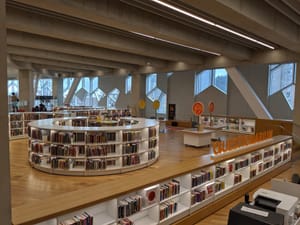There is an interesting digest of Libqual results in the current ARL Bimonthly Report. What particularly caught my eye was the discussion of the library website:
Yet according to LibQUAL+TM data, many library patrons, particularly undergraduates are not taking full advantage of the information available from library Web sites. While about 40% of faculty at ARL universities reported using the library Web site on a daily basis (still much lower than the number that use search engines daily), only 11% of undergraduates said they used the Web site with the same frequency, and 5.5% of undergraduates said they never use the library Web site–more than twice the percentage of faculty who never use it. This disparity may result from undergraduates not being aware of the services provided by library Web sites, not knowing how to access and use these services, or being lured to other Web sites. Undergraduates gave a rating of 6.04–the lowest rating they gave for any item–for their perception of how well the library keeps them informed of useful services. And undergraduates rated their perception of the ease of use of electronic resources below their minimum level of acceptable service for that area.[ARL 236: How ARL University Communities Access Information: Highlights from LibQUAL+]
This brought to mind Krisellen Maloney’s comment, quoted here a while ago:
Regardless of these advances, many library websites continue to replicate the physical and functional organization of the traditional library. Web-based access to services has evolved as a thin veneer over library technical infrastructures that were designed to support traditional library services. As such, library websites are typically organized around library functions (interlibrary loan, circulation, reference) or existing information stores (the card catalog, print indexes). Web-savvy users who are not familiar with traditional library organization methods do not view our websites as transparent or able to meet their information-seeking requirements. [ASIS&T Bulletin Oct/Nov 2004: Krisellen Maloney]
I thought that this expressed an issue very well. One of the major challenges facing libraries moving forward is the development of an effective web presence, one that engages with research and learning behaviors rather than simply wraps itself around available services.



